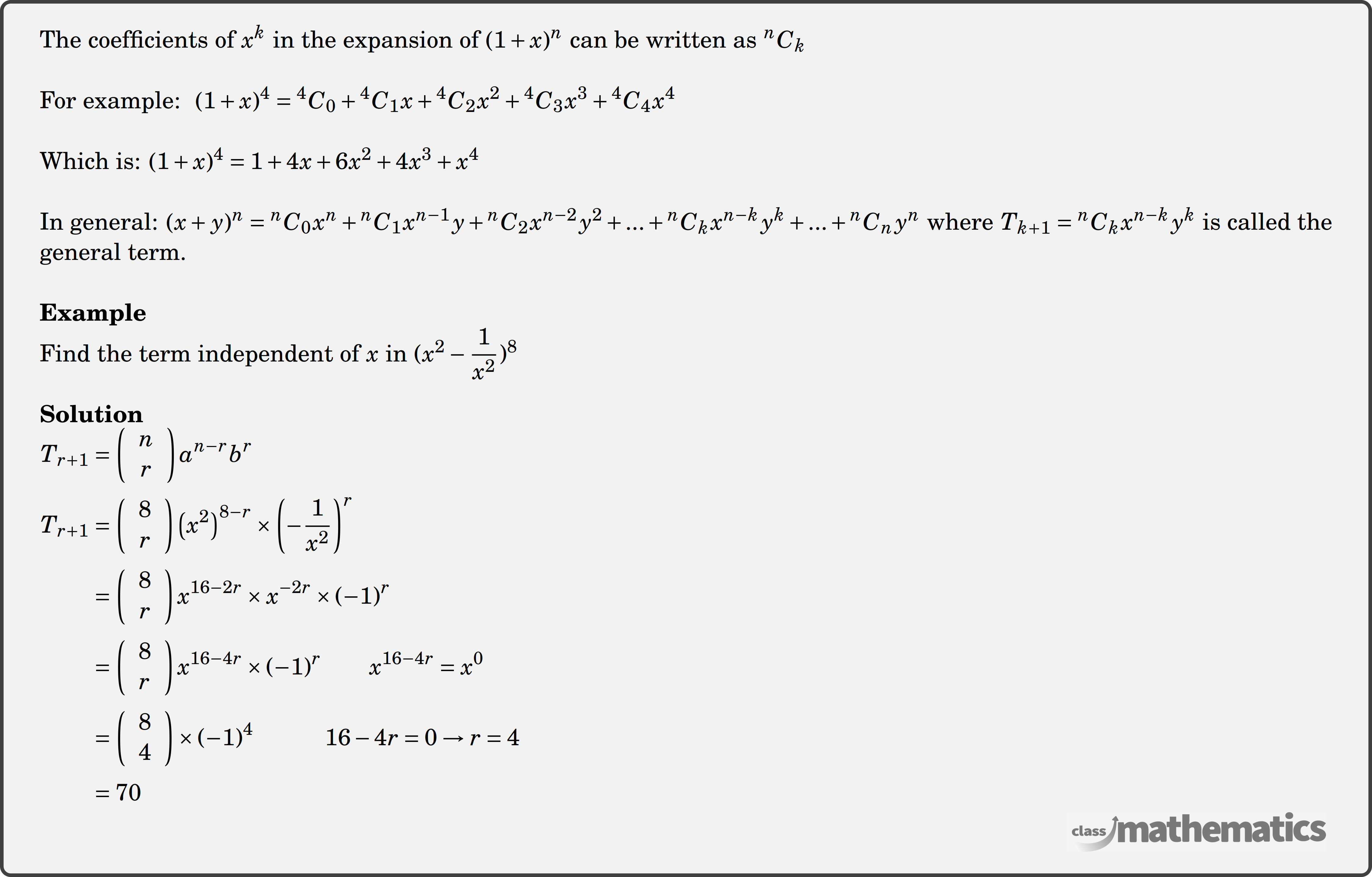Resources for Binomial Theorem
-
Questions
23
With Worked SolutionClick Here -
Video Tutorials
3
Click Here -
HSC Questions
5
With Worked SolutionClick Here
Binomial Theorem Theory

NSW Syllabus Reference
NSW Syllabus Reference: ME-A1.2: The binomial expansion and Pascal’s triangle. This will require student to
- expand \((𝑥 +𝑦)^𝑛\) for small positive integers \(𝑛\) (ACMMM046)
- derive and use simple identities associated with Pascal’s triangle (ACMSM009)
